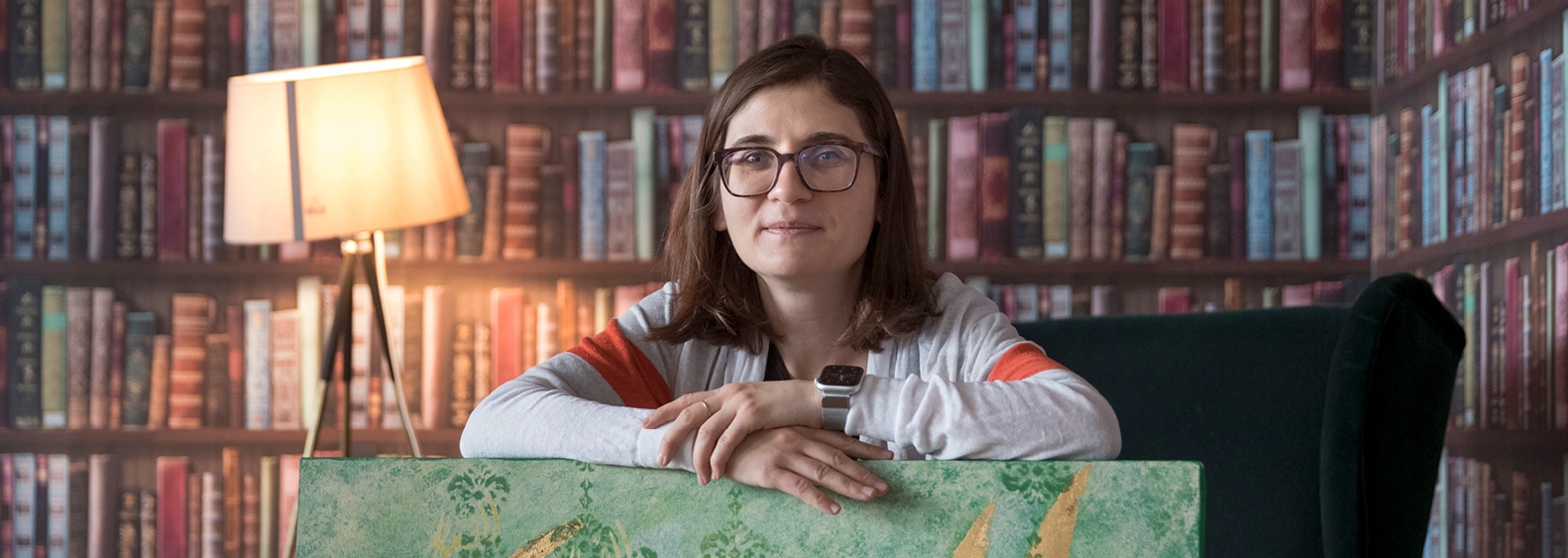Comments
- No comments found

Leading art authentication expert Dr Carina Popovici has discovered 40 counterfeit paintings, including supposed works by Monet and Renoir.
By leveraging machine learning technology, Dr Popovici uncovered a slew of paintings with a high probability of being fake, shedding light on what she deems as just the tip of the iceberg in terms of counterfeit art circulating online. Despite eBay's stringent policies against counterfeit items, the platform has been inundated with fake listings, prompting concerns over the efficacy of its authentication measures.
Dr Popovici's discovery of counterfeit paintings, such as a purported Monet titled "Forest With a Stream" priced at $599,000 and a Renoir piece labeled as a study of Claude Renoir for $165,000, underscores the urgent need for enhanced scrutiny of art listings on online platforms. Despite eBay's claims to prohibit counterfeit items, the prevalence of fake art highlights the challenges faced in policing online marketplaces.
Efforts to address the issue have been met with frustration, as Dr Popovici's repeated attempts to communicate her concerns to eBay have gone unanswered. With her company, Art Recognition, collaborating on research with esteemed institutions like Liverpool University and Tilburg University, Dr Popovici's machine learning technology has revolutionized the identification of counterfeit art online. By analyzing intricate details of artists' works, from brushstroke patterns to color palettes, the technology has provided unprecedented insights into the authenticity of paintings, challenging long-held attributions and supporting the identification of contested works.
Despite eBay's assurances of employing multiple layers of machine learning technology and trained investigators to combat counterfeit listings, Dr Popovici's findings suggest a pervasive problem that requires urgent attention. As the online art market continues to burgeon, the need for robust authentication measures is paramount to safeguarding buyers and preserving the integrity of the art world.
With the advent of machine learning technology, the ability to identify counterfeit art online has been significantly enhanced, offering hope for a more transparent and authentic art market in the digital age. However, concerted efforts from online platforms, regulators, and experts like Dr Popovici are imperative to combat the proliferation of counterfeit art and ensure a trustworthy marketplace for art enthusiasts worldwide.
Machine learning algorithms can spot fake paintings by analyzing various visual features and patterns within the artwork. Here's how it works:
Feature Extraction: Machine learning algorithms are trained to extract specific visual features from images, such as brushstroke patterns, color palettes, texture, and composition. These features are then used to create a unique digital signature for each artwork.
Training Data: To train the machine learning model, a dataset of authentic and known counterfeit paintings is required. These paintings are meticulously analyzed to extract relevant features and patterns.
Algorithm Training: The machine learning algorithm is trained on the dataset, where it learns to differentiate between authentic and counterfeit paintings based on the extracted features. Through iterative training and adjustment, the algorithm improves its accuracy in distinguishing genuine artworks from fakes.
Pattern Recognition: Once trained, the machine learning model can analyze new paintings and compare them against the learned patterns and features. By assessing similarities and deviations from authentic patterns, the algorithm can determine the likelihood of a painting being genuine or counterfeit.
Probabilistic Assessment: Machine learning algorithms often provide probabilistic assessments rather than definitive conclusions. They assign a probability score indicating the likelihood of a painting being authentic or counterfeit based on the analyzed features. A high probability score suggests authenticity, while a low score indicates potential forgery.
Iterative Improvement: As new data becomes available and counterfeit techniques evolve, machine learning models can be continuously refined and updated. This iterative process ensures that the algorithm remains effective in identifying counterfeit paintings with high accuracy over time.
By leveraging machine learning technology, art authentication experts like Dr. Carina Popovici can swiftly and accurately identify counterfeit paintings, thereby safeguarding buyers and preserving the integrity of the art market.
Leave your comments
Post comment as a guest